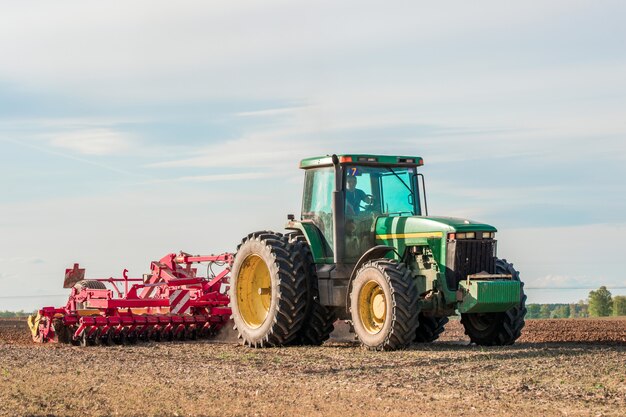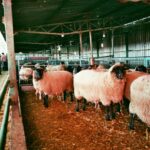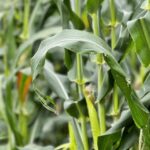Selecting the right farming tools is a crucial decision that directly affects the efficiency, productivity, and cost-effectiveness of agricultural operations. The choice between manual and motorized tools depends on various factors, including the size of the farm, the type of tasks to be performed, budget constraints, and long-term goals. Understanding the advantages and limitations of both types of tools can help farmers make informed decisions suited to their specific needs.
Manual Farming Tools
Manual farming tools have been used for centuries and remain indispensable in certain contexts. These tools, such as hoes, shovels, sickles, and hand plows, are operated by human effort and are ideal for small-scale farming or tasks requiring precision.
Advantages of Manual Tools
- Cost-Effective: Manual tools are generally more affordable than motorized equipment, making them an excellent choice for farmers with limited budgets.
- Simple Maintenance: With fewer moving parts, manual tools require minimal maintenance, reducing the need for costly repairs.
- Precision Work: Tasks such as weeding, transplanting, and harvesting delicate crops can be performed with greater accuracy using manual tools.
- Sustainability: Manual tools are environmentally friendly as they do not rely on fuel or electricity, reducing carbon emissions.
Limitations of Manual Tools
- Labor-Intensive: Manual tools require significant physical effort and time, which can be challenging for larger farms or during peak farming seasons.
- Limited Efficiency: They are best suited for small areas and may not be practical for extensive farming operations.
- Slower Productivity: Manual tools are less efficient for tasks like plowing or sowing, where speed and scale are critical.
Motorized Farming Tools
Motorized tools, such as tractors, tillers, and sprayers, are powered by engines or electricity and are designed for larger-scale farming operations. These tools offer speed, efficiency, and the ability to handle labor-intensive tasks with ease.
Advantages of Motorized Tools
- High Efficiency: Motorized tools can perform tasks quickly and on a larger scale, making them ideal for medium to large farms.
- Reduced Labor: These tools minimize the need for manual labor, making them beneficial in areas with limited workforce availability.
- Versatility: Modern motorized equipment often comes with attachments for various tasks, from plowing and planting to harvesting and spraying.
- Increased Productivity: By completing tasks faster, motorized tools allow farmers to focus on other aspects of farm management.
Limitations of Motorized Tools
- High Initial Cost: Motorized equipment requires a significant upfront investment, which may be a barrier for small-scale farmers.
- Maintenance and Repairs: Regular maintenance, fuel costs, and potential repair expenses can add to the overall operational costs.
- Skill Requirement: Operating motorized tools often requires training and experience to ensure safe and effective use.
- Environmental Impact: Fuel-powered machines contribute to greenhouse gas emissions, raising concerns about sustainability.
Factors to Consider When Choosing Between Manual and Motorized Tools
- Farm Size and Scale: For small farms or garden-scale operations, manual tools are often sufficient. Larger farms, however, benefit from the speed and efficiency of motorized tools.
- Type of Crops: Precision tasks for sensitive crops may favor manual tools, while motorized equipment is better suited for field crops like wheat, corn, and rice.
- Budget: Farmers should weigh the initial and ongoing costs of motorized tools against the affordability of manual options.
- Labor Availability: If labor is scarce or expensive, motorized tools can help compensate for the shortage.
- Environmental Concerns: Farmers aiming for eco-friendly practices may lean toward manual tools or consider electric-powered motorized options.
- Terrain and Soil Type: Motorized tools are more effective in large, flat fields, while manual tools may be preferable for hilly or uneven terrains.
Combining Manual and Motorized Tools
In many cases, a combination of manual and motorized tools provides the best balance between cost and efficiency. For example, farmers might use motorized plows for initial land preparation and manual tools for planting and weeding. This approach allows for greater flexibility and ensures that each task is performed with the most suitable equipment.
Choosing between manual and motorized farming tools is not a one-size-fits-all decision. It requires careful consideration of the farm’s needs, available resources, and long-term goals. By understanding the strengths and limitations of both types of tools, farmers can develop a tailored strategy that maximizes efficiency and productivity while staying within budget and addressing environmental concerns. Ultimately, the right tools can transform farming operations, making them more sustainable and profitable.
Join 'Farmers Mag' WhatsApp Channel
Get the latest Farming news and tips delivered straight to your WhatsApp
CLICK HERE TO JOIN






